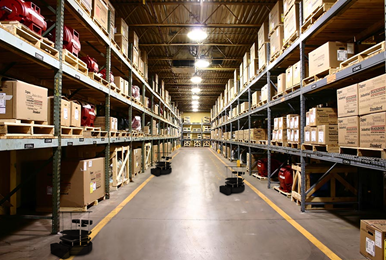| The SWARM Logistics Assistant use case involves robots, rovers and drones that collaboratively perform opportunistic scanning of a given warehouse. The involved robots are intended to assist human in a logistics domain. These assistive tasks could, as an example, include joining forces to move a heavy obstacle from one place to another. In parallel to assistive tasks, robots involved in the scenario are designed to scan the entire area of the warehouse and share the acquired information to update the knowledge base (e.g., map) on the go. |
| In addition to collecting information about the maps of the entire area, the connected robots will also be used for collecting additional information implicitly e.g. room temperature, presence of humans, detection of in-path obstacles etc. Since the information is acquired collaboratively by all the connected robots of the swarm, the current status of the area is always up to date and the effort is always divided among all members. As a starting point, each connected robot will be fed with some default information e.g. map of the area. This information is updated opportunistically on the go as the robots perform their main tasks.
|

|
| The swarm logistics scenario is enabled by the CPSwarm toolchain, and it is aimed at demonstrating the viability and effectiveness of the model-based and predictive design approach promoted by CPSwarm. In the scenario, the CPSwarm workbench will be exploited to design and test both the single behaviors of involved robots, the foreseen interactions with humans and the overall emerging features of involved robots acting in swarms. The CPSwarm simulation toolkit will, particularly, be exploited to test reactions of the swarm to situations not encoded and/or known at design time, also involving humans. This will enable proof testing of the logistic assistant policies and behaviors before deployment on the shop floor. Thanks to the bulk deployment tool developed in the project, any discrepancy or any additional feature that might emerge during the experimentation will be easily incorporated in the system design and re-programming of robots will be performed seamlessly, with virtually no down-times. |

 Copyright © 2018 — cpswarm.eu.
Copyright © 2018 — cpswarm.eu.